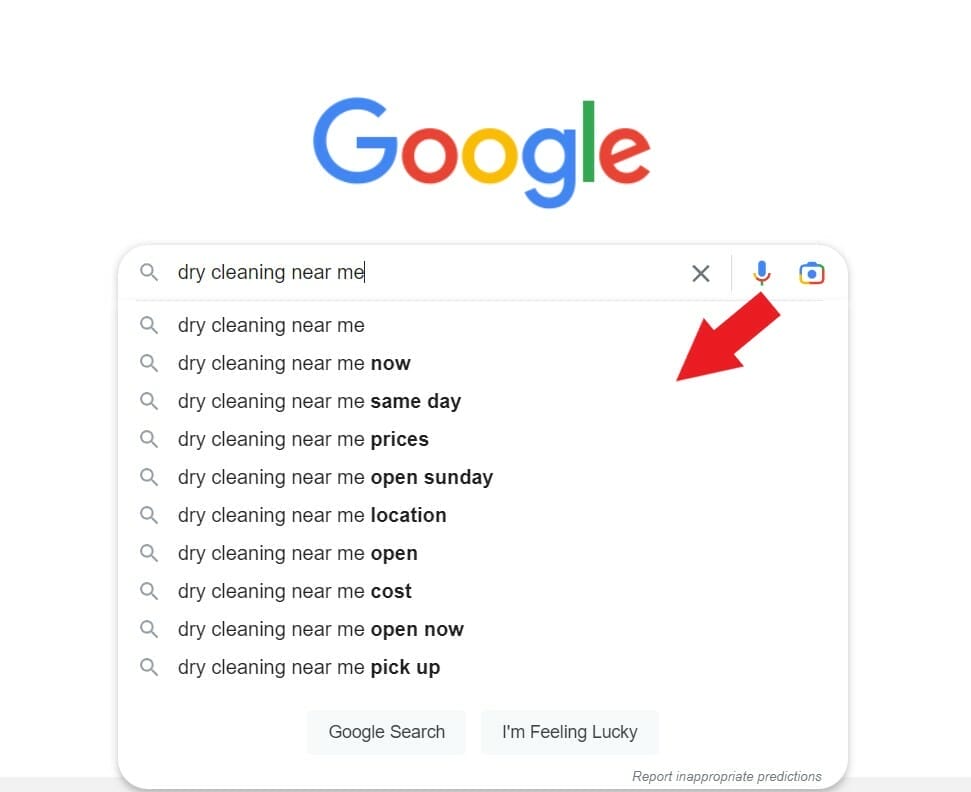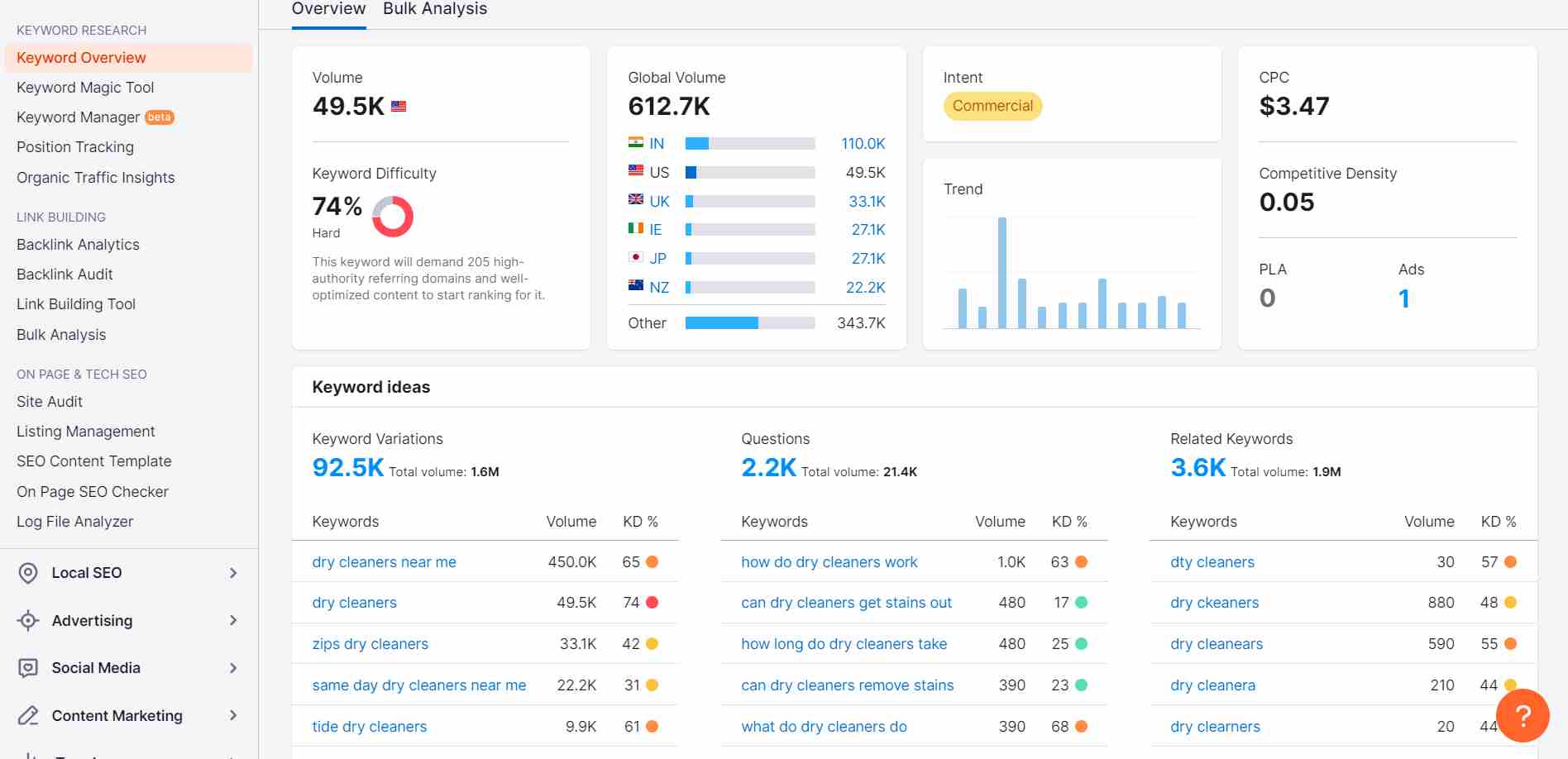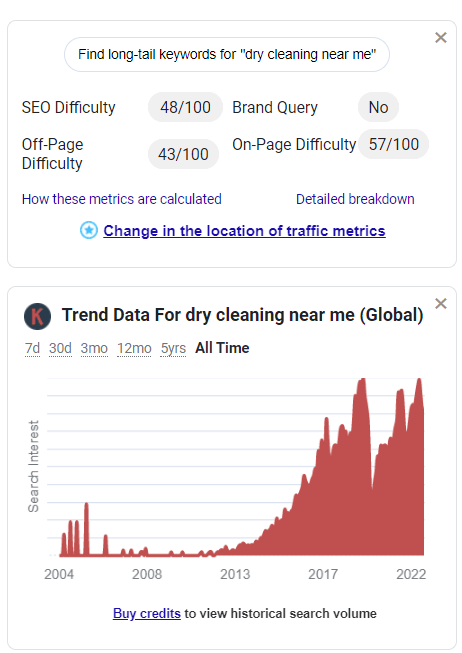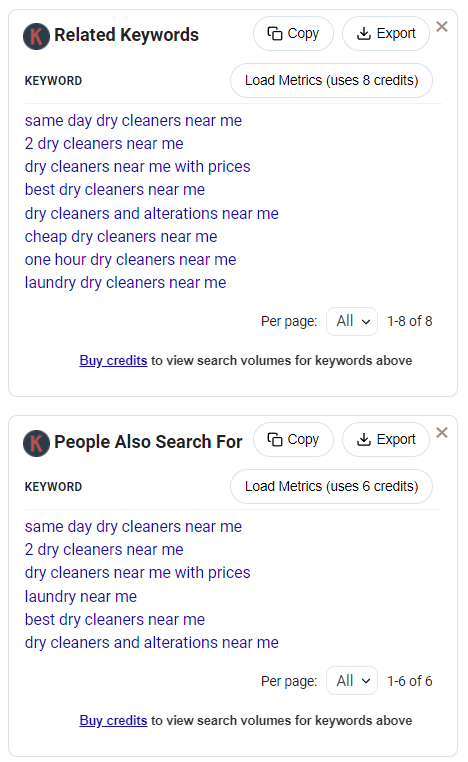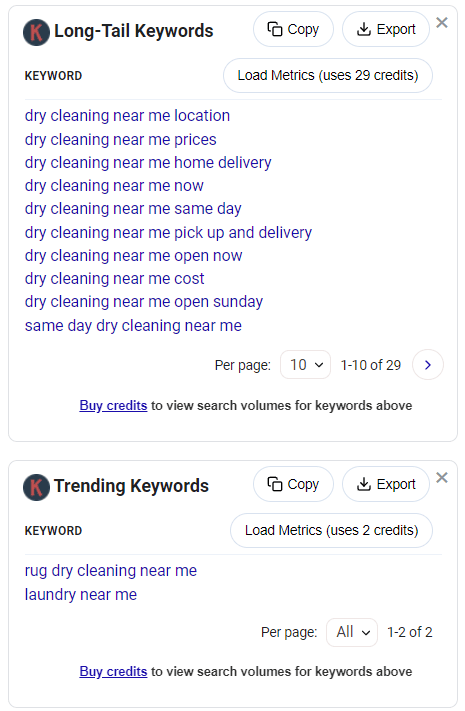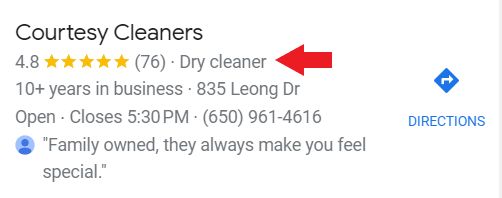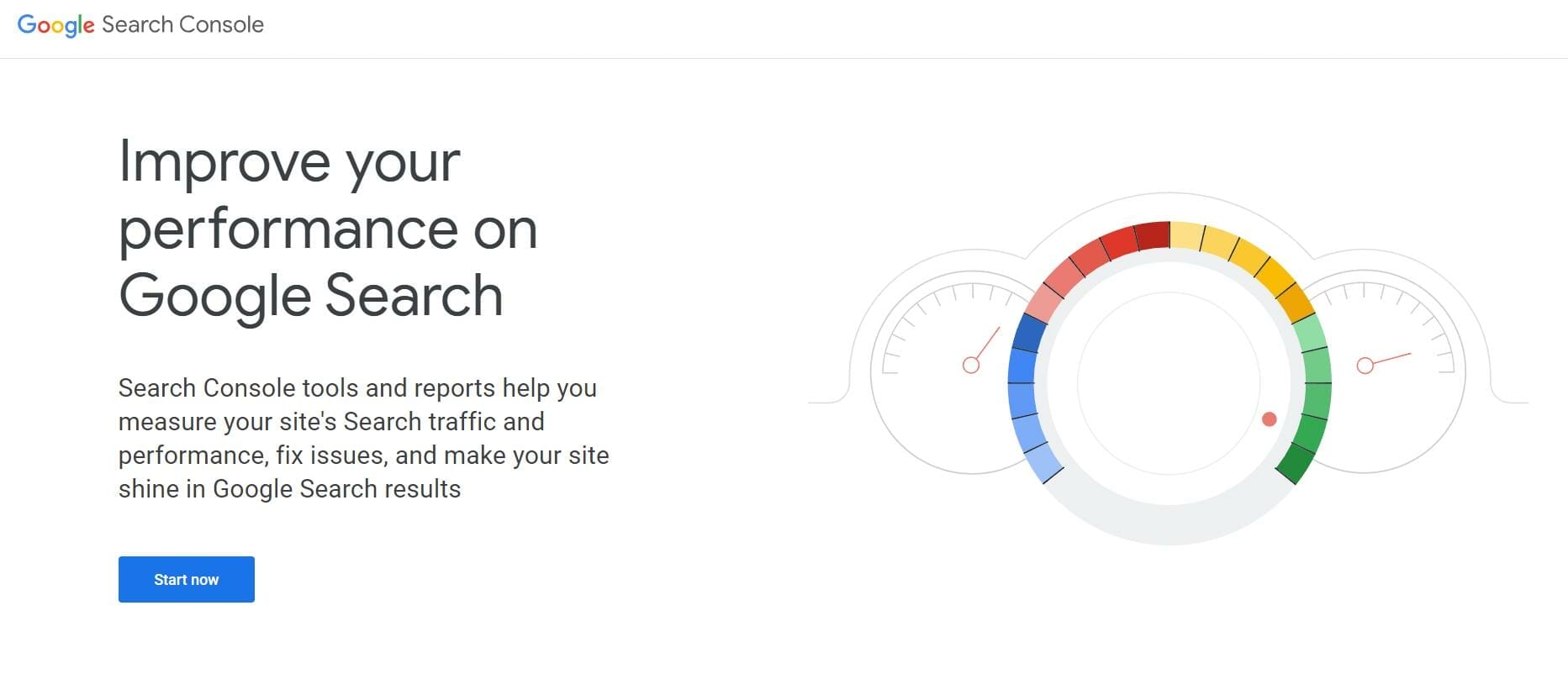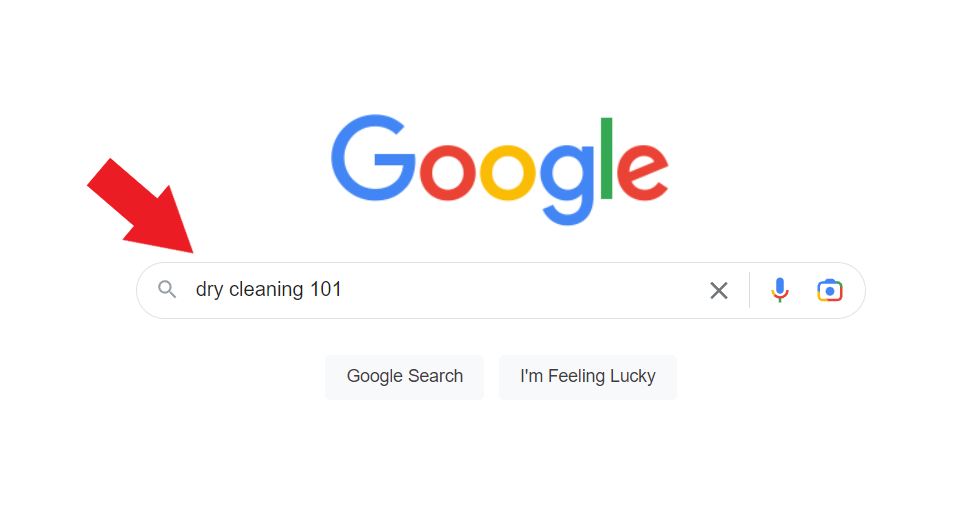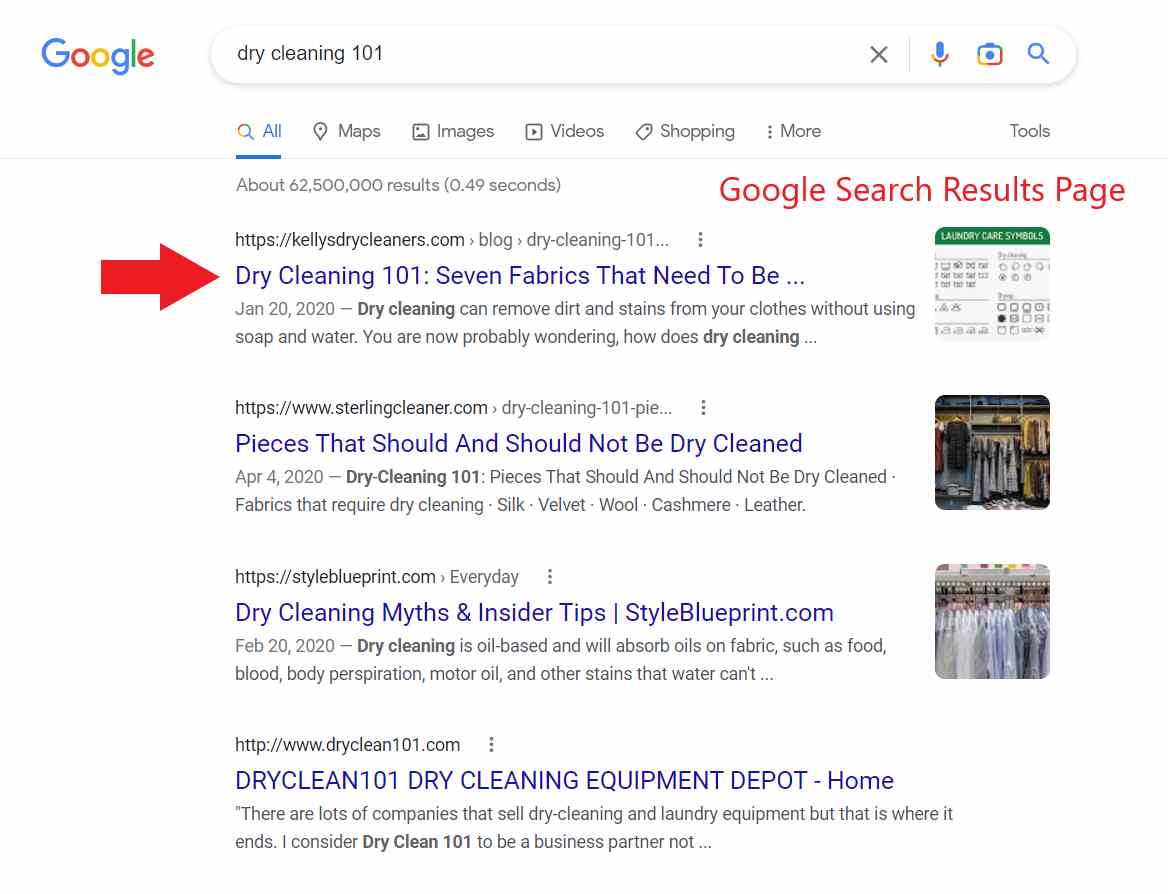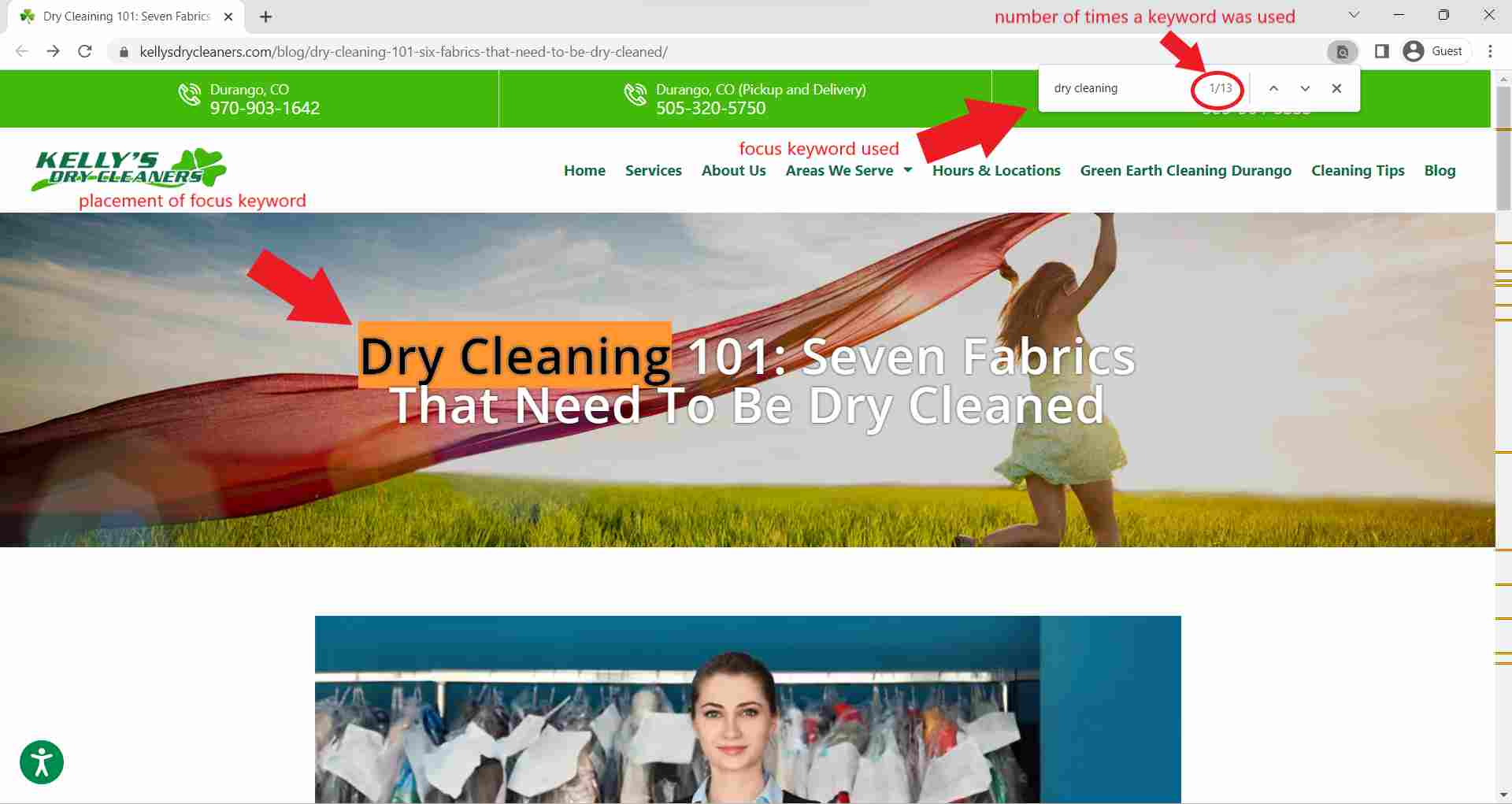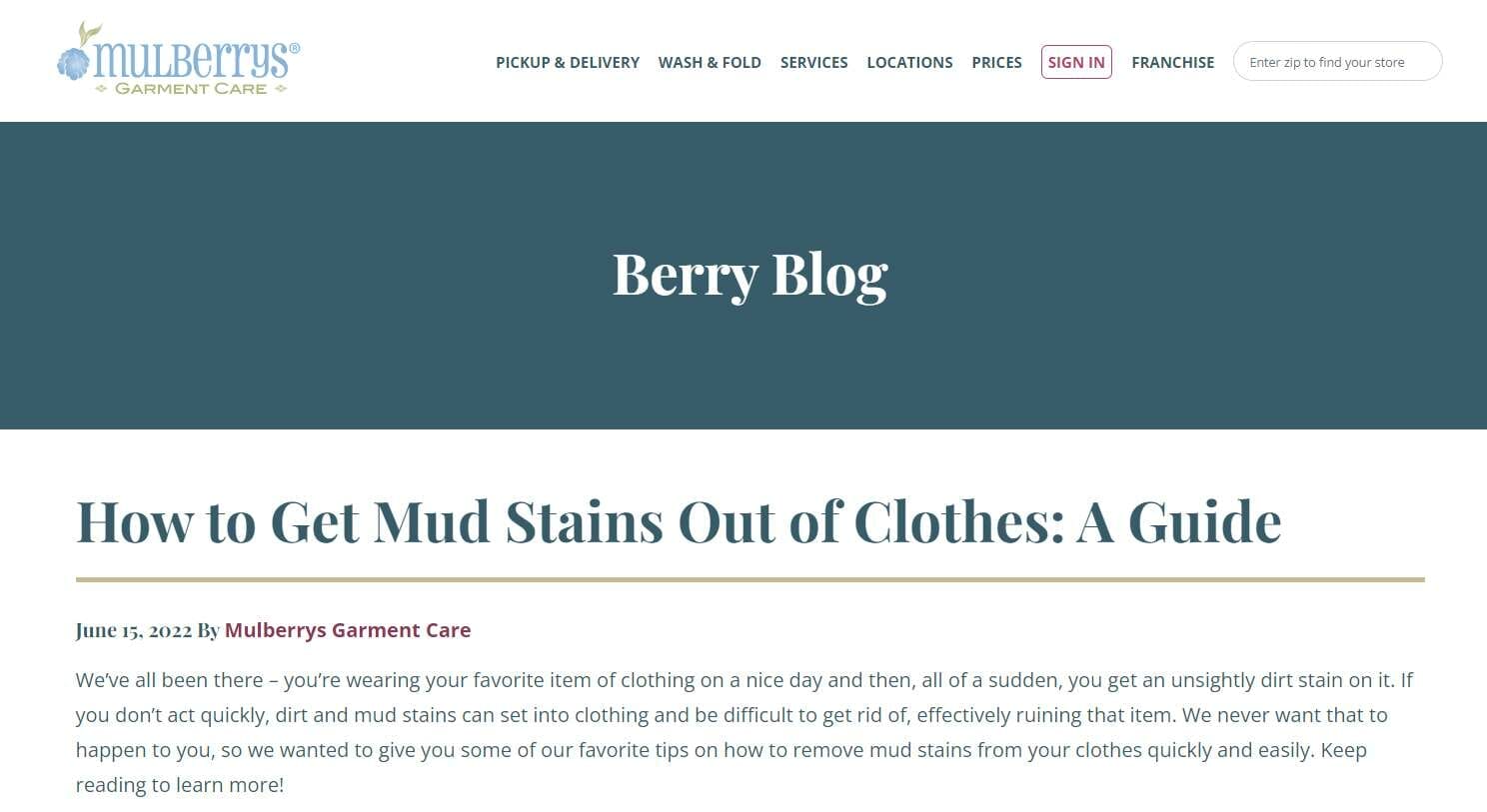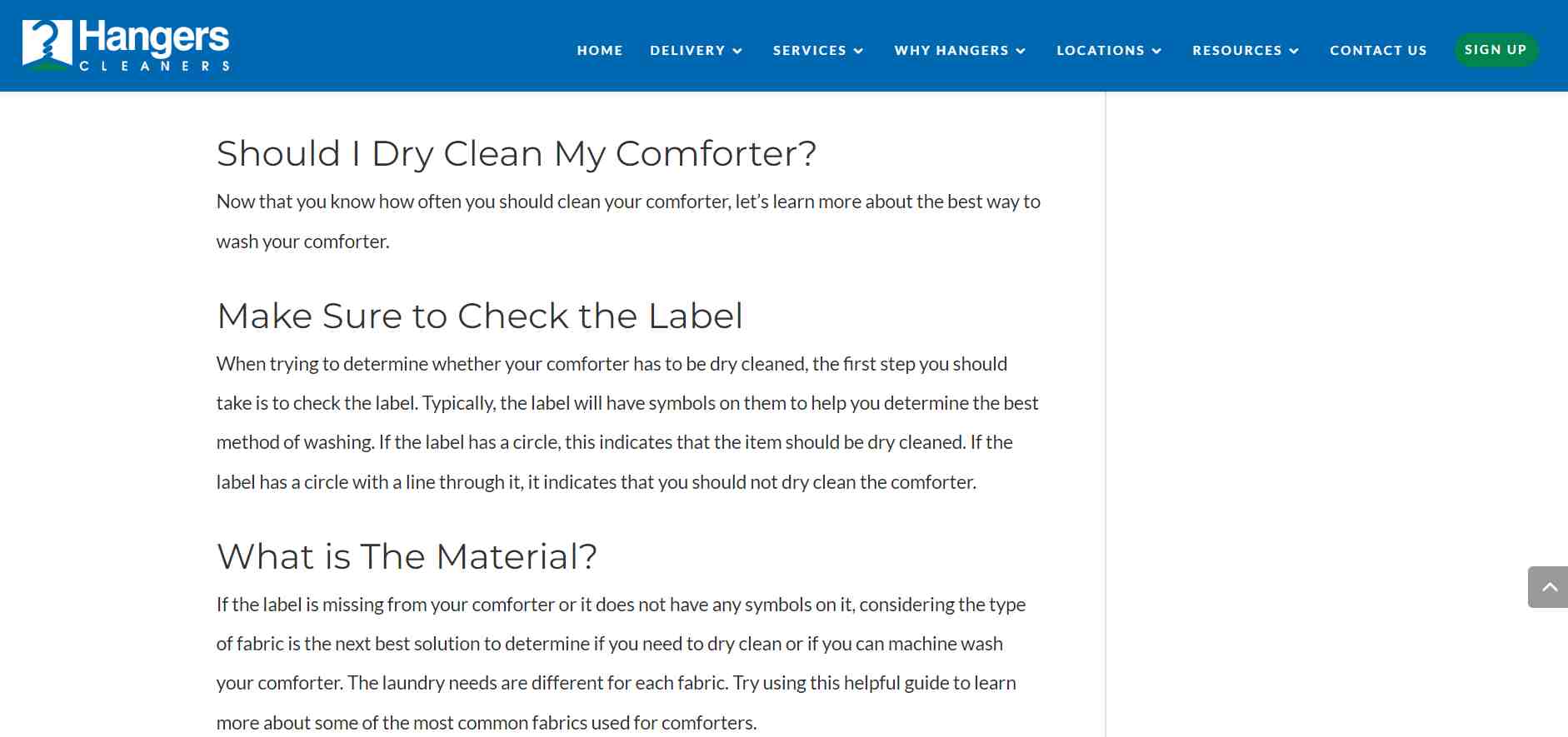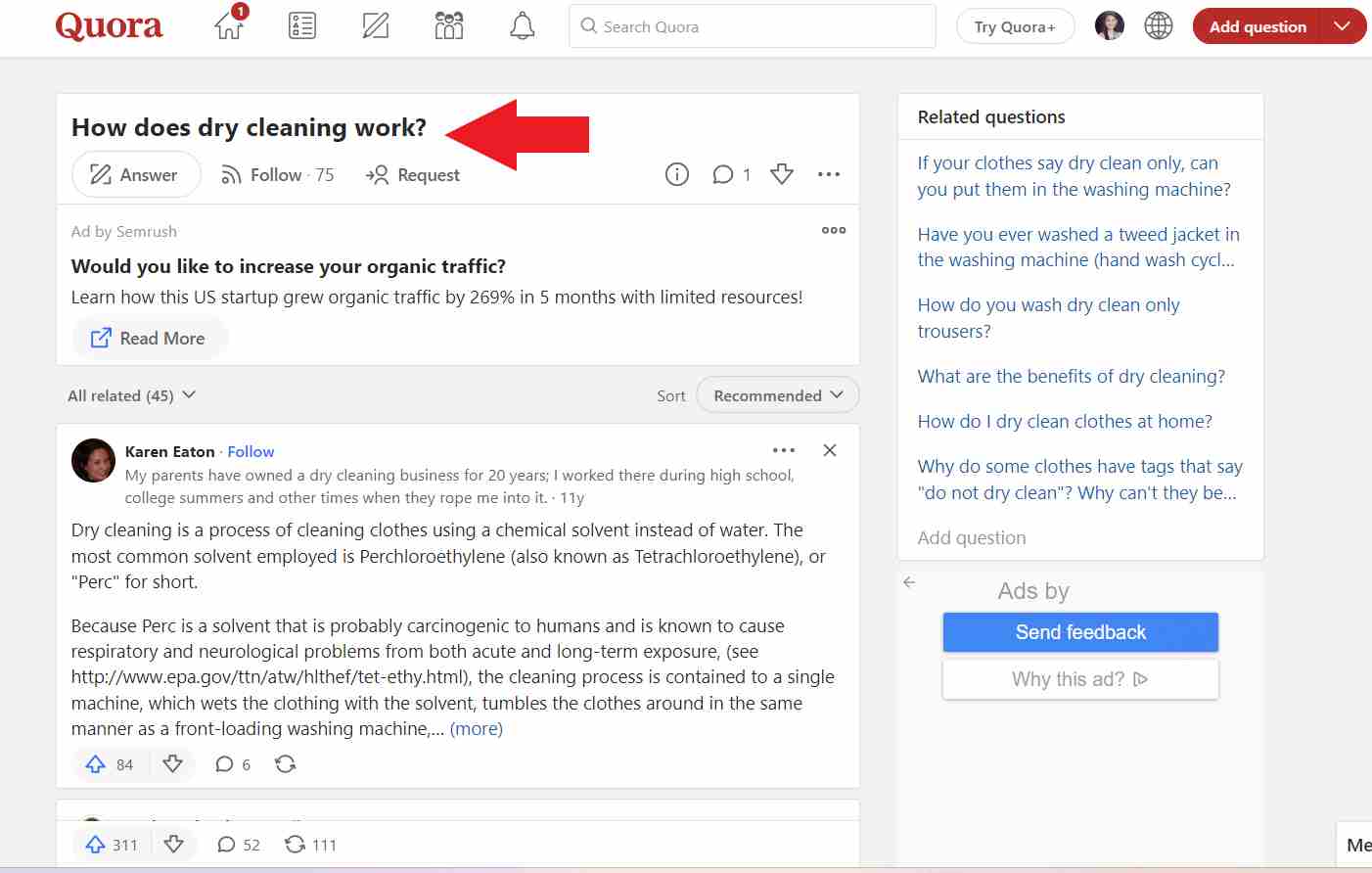Table of Contents
ToggleWhat is Search Engine Optimization (SEO)?
Search Engine Optimization (SEO) is the process of improving the rank and quality of your dry-cleaning website on search engines like Google and Bing. It has three types which are On-page SEO, Off-page SEO, and Technical SEO.
On-page SEO aka On-site SEO refers to the process of improving the quality of your dry cleaning website so that it ranks high on search results. This includes publishing relevant content to your target audience, using the right keywords, making your content readable, and a lot more in the later part of this blog.
Meanwhile, Off-page SEO aka Off-site SEO refers to the process of improving your rank on SERP by optimizing the elements that are outside your website. This includes optimizing your business listings, writing guest posts, and posting on social media platforms.
Lastly, Technical SEO is all about making sure that your dry-cleaning website meets the technical requirements that search engines require for high-ranking websites such as having a fast page loading speed and making sure that your page is indexed and crawlable.
Does SEO for Dry Cleaners sound like a great idea?
Why SEO for Dry Cleaning Businesses?

SEO is a valuable marketing strategy due to several reasons. First, it can help improve the visibility of your dry cleaning business. In fact, ranking in the top 3 of the search results page gets 54.4% of all clicks! It’s because most consumers don’t have that much time to scroll and look at the other pages from the search results.
So, if you are able to do SEO right, it can help you get more new customers!
Second, it goes well with pay-per-click campaigns. Since the search engine results page shows a combination of organic and paid ads, using these two strategies gives you a higher chance of dominating the search results page. So, if you want to stay on top of the minds of your potential customers, you should consider investing in SEO as an investment for your dry cleaning business.
Lastly, SEO can be used as a long-term strategy. Although it takes time before you see results (around 6-12 months), by using the right strategies (which we will share with you in a bit), you are more likely to get continuous success in the long run.
Don’t have time to do SEO for your Dry Cleaning Business?
How to do SEO for Dry Cleaners?
Now that you have an idea of how SEO can help your dry cleaning business stay on top of the search results pages, here are some tips that will help you get more traffic and generate more leads!
1. Keyword Research
Keyword research refers to the process of finding out the search terms that your target audience uses when looking for dry cleaning services in their area. This step is important for SEO because it gives you an idea of what your target audience is actually searching for, gives you a better understanding of their search intent, and how difficult it would be to rank for a specific keyword.
Other reasons why you shouldn’t skip keyword research when it comes to SEO is because it can help you get more traffic, and push potential customers from the awareness stage of the buyer’s journey to the decision stage.
Here are the factors that you should be looking at when doing keyword research:
First, it should be relevant to your business. Your target keywords should provide value to your potential customers.
Second, authority. If you’re competing with articles published by like Forbes, it would be impossible for you to rank higher than them especially if you haven’t started building your dry cleaning website’s domain authority yet. With that, you have to make sure to see who your competitors are before writing content.
Lastly, monthly search volume. Before using a specific keyword throughout your dry cleaning content, you have to make sure to check how often your chosen keyword is searched for in Google. Posting content using keywords that nobody uses when searching on Google is just a waste of time.
Tips when doing keyword research
- Use long tail keywords
- Long-tail keywords are search terms that target a specific search query. It may not get that much traffic, however, it may bring you a higher conversion value. That’s why if you are publishing blog posts on your dry cleaning website, adding long-tail keywords on your page titles can help you rank high on specific search queries.
- Look at the auto-complete suggestions section
- There are two sources where Google’s autocomplete suggestions are based (1) the trending search terms that most people in your area are using, and (2) your search history or previous pages you’ve been visiting. This can be a great tool that can help you get ideas of real search terms that your potential customers are looking for which will be beneficial in helping you get a better understanding of searcher intent.

- There are two sources where Google’s autocomplete suggestions are based (1) the trending search terms that most people in your area are using, and (2) your search history or previous pages you’ve been visiting. This can be a great tool that can help you get ideas of real search terms that your potential customers are looking for which will be beneficial in helping you get a better understanding of searcher intent.
- Check the Related Searches Section
- The Related Searches Section is commonly found at the bottom part of the search results page. It’s another tool that you can use when looking for relevant keywords based on your search query.
- Use keyword research tools like Google Ads Keyword Planner, Moz, or Semrush
- Keyword Planner
- With the Google Ads Keyword Planner, you will be able to get keyword ideas that are relevant to your business, have an idea of the suggested bid estimates for each keyword, and add them to your advertising campaigns.

- With the Google Ads Keyword Planner, you will be able to get keyword ideas that are relevant to your business, have an idea of the suggested bid estimates for each keyword, and add them to your advertising campaigns.
- Moz Keyword Explorer
- The Moz Keyword Explorer is another SEO keyword research tool that makes it easier to find the best keywords for your dry cleaning business. All you have to do is create a Moz account and once your account gets verified, you can now see a comprehensive analysis of your target keyword.

- The Moz Keyword Explorer is another SEO keyword research tool that makes it easier to find the best keywords for your dry cleaning business. All you have to do is create a Moz account and once your account gets verified, you can now see a comprehensive analysis of your target keyword.
- Semrush
- Semrush is another tool that provides you with an overview of the average monthly volume, search queries that your target audience uses, variations, and the fluctuation in the rank of your target keyword throughout the year.

- Semrush is another tool that provides you with an overview of the average monthly volume, search queries that your target audience uses, variations, and the fluctuation in the rank of your target keyword throughout the year.
- Keyword Planner
- You can also use browser extensions like Keyword Everywhere to see more keyword opportunities. What’s great about this keyword tool is that it instantly tells you the relevant keywords on your browser and lots of useful data such as the trend data for your target keyword, SEO difficulty, trending keywords as well as long-tail keywords.



- Create a spreadsheet and list all of your target keywords
- Once you have your list of keywords for your dry cleaning business, compile them on a spreadsheet so that you can visualize the keywords based on estimated monthly traffic, leads, trends, etc. This way, you can see whether there are keywords that you have already used and at the same time, keep track of your keyword list.
2. Get listed in online directories

Getting listed in online directories like Google My Business and Yelp can help you with your SEO efforts. An optimized business profile not only helps you get more web traffic but also more qualified leads. You just have to make sure that you provide accurate details about your dry cleaning business and keep your target audience posted with the latest updates on your business.
Want to learn the steps on how to set up your dry cleaning business listing? Check out our blog about Google My Business for Dry Cleaners for more details.
Here are some tips on how you can improve your local SEO:
- Select the most suitable business category
- To increase your chances of ranking high on relevant search results, make sure to choose the most suitable category for your dry cleaning business. For example, if you mainly provide dry cleaning services to your customers, choose “dry cleaner” as your primary business category. If you also offer laundry services, you can also add them as a secondary business category.

- To increase your chances of ranking high on relevant search results, make sure to choose the most suitable category for your dry cleaning business. For example, if you mainly provide dry cleaning services to your customers, choose “dry cleaner” as your primary business category. If you also offer laundry services, you can also add them as a secondary business category.
- Write a compelling business description
- Business descriptions serve as an overview of what your dry cleaning business has to offer. Here, you can briefly tell your potential customers about your origin story, specific areas covered, as well as your mission.

- Business descriptions serve as an overview of what your dry cleaning business has to offer. Here, you can briefly tell your potential customers about your origin story, specific areas covered, as well as your mission.
- Post regularly
- Google Posts help you feature timely content to your audience, increase web traffic, and improve your SEO efforts. You have to post consistently to build your location authority. If you want to read an in-depth guide about Google Posts, check out our blog about How to Post on Google to learn more.

- Google Posts help you feature timely content to your audience, increase web traffic, and improve your SEO efforts. You have to post consistently to build your location authority. If you want to read an in-depth guide about Google Posts, check out our blog about How to Post on Google to learn more.
3. Publish high-quality content
When we say high-quality content, it means that your content should be comprehensive, provide accurate information, and is valuable to your target audience. Content marketing and SEO go hand in hand. Your content marketing strategies will only perform well if you incorporate SEO tactics throughout your content.
To determine if your content is working well, here are some of the key performance indicators (KPIs) that let you know that you’re on the right track:
- You’re generating leads from your content
- You notice an increase in your web traffic
- You’re starting to get more shares and website visits
- You’re getting backlinks from authoritative domains
Tips when publishing content on your dry cleaning website:
- Make sure to have it indexed on Google Search Console
- Website indexing allows search engines to get a better understanding of what your website is all about. With the use of tools like Search Console, you can confirm whether Google can crawl your site, monitor the volume of traffic your site gets, and fix indexing issues right away.

- Website indexing allows search engines to get a better understanding of what your website is all about. With the use of tools like Search Console, you can confirm whether Google can crawl your site, monitor the volume of traffic your site gets, and fix indexing issues right away.
- Improve readability level
- Readability refers to how digestible your content is. In fact, it’s one of the factors that help you improve your rank on search rankings. Since you want to promote your dry cleaning services to your target audience, you have to make sure that they understand what’s stated in your articles, infographics, and other types of content you publish.
- Tips that can help improve the readability level of your content are the following:
- Keep it short but concise. Most people don’t have that much time to read lengthy articles.
- Use short paragraphs. Don’t go beyond 3 sentences per paragraph.
- Check readability level. Use Hemingway Editor to check your sentence structure and make your content easier to consume (make the readability level grade 8 or below)

- Have a content checklist
- To make sure that you don’t miss out on important elements of your content, it’s best that you have a checklist to follow. You can create a checklist template on Google docs and share it with your team. This will help you consistently publish high-quality content.
- Use other variations and LSIs of your focus keyword
- Keywords help search engines define your rank on SERP. However, you have to make sure that you’re also using other keyword variations to increase the chances of ranking on relevant search queries.
- Here are the steps on how to manually search relevant keywords under your competitor’s posts:
- Search for the keyword that you want to rank for on your preferred search engine. For example, you want to see the type of content that ranks for the keyword “dry cleaning 101.”

- After that, go to each post based on the search results page. In this example, let’s see the content of the top-ranking blog post for the keyword “dry cleaning 101.”

- Then, press Ctrl+F followed by the keyword that you want to check on your competitor’s blog. This will help you find how many times a specific keyword was used on your competitor’s blog posts. Aside from that, you’ll also have an idea of where you should add your focus keyword.

- Do the same steps on other posts from your competitors.
- This will give you an idea of where you should place your target keywords along with the number of times you should use them.
- Search for the keyword that you want to rank for on your preferred search engine. For example, you want to see the type of content that ranks for the keyword “dry cleaning 101.”
- Make sure that your content suits the interest of your target audience
- If you want to rank high on relevant search queries, you want to publish content that’s relatable to your potential customers. You should be able to provide something that’s valuable to your audience. For example, “Which Clothing Pieces Should or Shouldn’t be Dry-cleaned?” or “How to wash and care cashmere sweaters.”

- If you want to rank high on relevant search queries, you want to publish content that’s relatable to your potential customers. You should be able to provide something that’s valuable to your audience. For example, “Which Clothing Pieces Should or Shouldn’t be Dry-cleaned?” or “How to wash and care cashmere sweaters.”
[Source]
- Make your content readable
- Some page visitors want to go straight to the part of the content that has the information that they are looking for. To improve your content’s readability, some of the tips that you can do includes using a table of contents, numbered and bulleted lists, relevant images between walls of text, or infographics.

- Some page visitors want to go straight to the part of the content that has the information that they are looking for. To improve your content’s readability, some of the tips that you can do includes using a table of contents, numbered and bulleted lists, relevant images between walls of text, or infographics.
[Source]
4. Provide a good user experience

User experience (UX) refers to how functional your website is when someone visits it. Your dry cleaning website should provide value to your users, be easy to use, and has functional links and buttons. It’s all about crafting your website in a way that is easy to navigate and with excellent usability features.
Tips on how to improve the user experience:
- Make it easy to navigate your site
- With well-structured navigation on your dry cleaning website, it’ll be easier for your page visitors to find relevant information, and even search engine crawlers will be able to find important pages on your site.
- Make sure that all buttons and links are working
- It can be frustrating when you’re clicking a button or link to see more information but it ends up not functioning the way it should. So, before you launch your website, make sure to test it to see if it works on all devices.
- Optimize your landing pages
- You also have to make sure that the content of your landing pages is relevant based on the preview that people see on the search results page. For example, if your title and meta description says that the page contains a checklist for your dry-cleaning customers then it shouldn’t redirect them to irrelevant pages like your store locator page.
5. Internal links
Internal links refer to the page on your site that provides more detailed information about the topic you’re mentioning. It’s important to use internal links on your content (e.g. blog posts) because it helps search engines get a better understanding of your site’s structure and at the same time, keeps your page visitors engaged with your dry-cleaning website.
Tips when using internal links:
- Use keyword anchor text instead of using phrases like “click here” or “this post.” This will make it clear for search engines and page visitors what your page is all about.
- When using keyword anchor texts, keep them under five words.
- Link to important pages on your dry cleaning website, this helps web crawlers get a better understanding of your site’s structure
- At least 3-5 internal links. Avoid adding too many links as they may look spammy to your page visitors.
6. Acquire backlinks

Backlinks consist of links that come from other websites. This happens when other websites link to one of your dry cleaning pages. It is said that pages that have more backlinks tend to rank higher on organic search results because people see your content credible and useful.
Tips on how to acquire backlinks:
- Publish relevant content to your target audience (e.g. infographics, blog posts, useful guides)
- One of the easiest ways to get backlinks is by creating visual content. For example, if you have lots of lengthy blog posts on your dry cleaning website, you can repurpose them into infographics and post them on social media platforms like Pinterest. Pinterest is known to help you drive website traffic, spot emerging trends, and run ads. So, if you’re looking for a place to post your repurposed content, adding them on Pinterest would be a great idea!
- Find guest posting opportunities
- Guest posting is when you write an article and publish it on other websites. Its main purpose is to make your dry-cleaning business visible to a new audience. When done right, it can help you acquire backlinks!
- Tips for guest posting:
- To find guest posting opportunities, use keywords like dry cleaning guest blog + write for us
- Strictly follow the guidelines posted by the website that accepts guest blogs
- Link to relevant pages on their site. This will give them an idea that you are familiar with the type of content they publish.
- Use your bio to generate more leads. You can add a link to your social media pages or any relevant page from your dry cleaning website.
- Respond to comments under your guest post. Being responsive helps you establish meaningful connections with your new audience.
- Promote your content on your website or social media.
- Post in forums where dry cleaning topics or questions are raised
- In community platforms like Reddit and Quora, you’ll see tons of questions that can be relevant to dry cleaning. You can use that as an opportunity to gain backlinks by sharing your knowledge as a dry cleaner and if you have a relevant blog, you can attach the link to your response. This will help you establish your expertise in the dry cleaning industry.

- In community platforms like Reddit and Quora, you’ll see tons of questions that can be relevant to dry cleaning. You can use that as an opportunity to gain backlinks by sharing your knowledge as a dry cleaner and if you have a relevant blog, you can attach the link to your response. This will help you establish your expertise in the dry cleaning industry.
7. Optimize photos
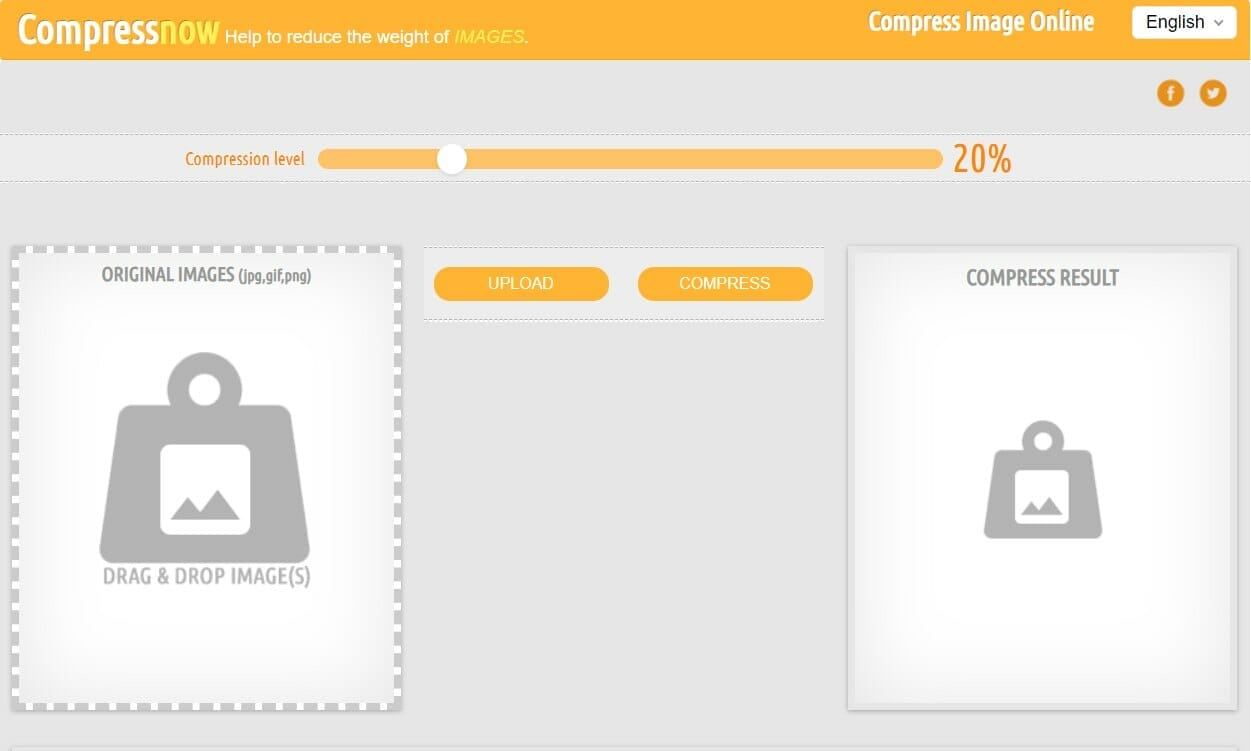
Adding relevant photos on your dry cleaning website helps page visitors to stay longer on your site, makes your content look better, and easier to consume compared to a page that has walls of text in it. In fact, content that has images or videos in it can get up to 42% higher click-through rates!
However, despite these benefits that you can potentially gain from using images, if you’re not optimizing them properly, it might lead to slow-loading pages.
Tips on how to properly optimize photos on your dry cleaning website:
- Compress high-resolution images before uploading them on your site by using CompressNow or TinyPNG
- Use the best image size and dimension that suits your content
- Use unique images in each content that you post
- Make sure that it’s relevant to your content
- Use images from Free Photo Stocks like Pexels, Unsplash, or Pixabay
8. Proper use of alt-tags
Alt tags serve as an alternative for images in case they failed to load on the user’s end. Aside from that, is also used to help visually impaired individuals to get a better understanding of what your content is all about.
Tips on how to properly use alt tags for SEO:
- Should be descriptive and contain keywords
- Be specific when describing the picture. The reader should be able to visualize the image used by just reading the alt text.
- Avoid stuffing your alt tags with too many keywords
- Keywords can help you rank high on the search results page. However, if you stuff your alt tags with so many keywords it might negatively affect your rank. So, just use your focus words sparingly.
- Don’t start with “image of” or “photo of”
- It’s understandable that you’re already describing an image. So, instead of starting your alt tags with “image of” or “photo of”, briefly explain the picture used on your page.
- Keep it short
- There are platforms that have no limits when it comes to the length of alt tags. However, it’s recommended to use around 125 characters or less so that your image description doesn’t get cut off in the middle.
9. Optimize your title tags and meta descriptions
Title tags are one of the first few things that you can see on SERP. These are the ones that are displayed in a blue hyperlink. You can also see them on your page title, or your tab window.
Tips when writing title tags for SEO:
- It should contain your focus keyword
- As much as possible, place your focus keyword as close to the beginning of your title tag. This way, search engines, and potential customers will immediately see what your page is all about.
- Recommended length: 50-60 characters
- Avoid stuffing your title with the same keyword
- Instead of using the same keywords in your title tag, use other variations of your keywords in your title tags.
- Should be unique on every page
- Try to avoid duplicate title tags as they may confuse web crawlers and your page visitors.
Meta descriptions serve as a brief summary of what your content is all about. It should tell your page visitors what to expect on your dry cleaning website.
Tips when writing meta descriptions for SEO:
- The recommended length for meta descriptions is 150-160 characters.
- Meta descriptions that exceed 160 characters will not be seen by your potential customers. So, it’s best to use the recommended length.
- Add a call-to-action
- To increase the chances of getting higher click-through rates, including a call-to-action on your meta descriptions can help.
- Use your focus keyword
- Adding your focus keyword to your meta description also helps search engines become familiar with your content. It also helps your page to show up on relevant search queries. For example, if someone searches for “dry cleaners near me” and your meta description has the keyword “dry cleaners near me” in it, there are high chance that you’ll show up on their search results page.
- It should be relevant to the content of your page
- Since meta descriptions serve as an overview of what your page is all about, you have to make sure that it’s relevant to the content of your page. Avoid writing misleading meta descriptions just to bait potential customers into clicking your page. Not only will it damage your reputation as a dry cleaning business, but Google will also penalize you for it.
10. Fix broken links

Broken links happen when a link on your website is no longer working due to several reasons. It could be because the URL has changed, there are typographical errors in URLs, the page has been deleted, your domain name changed, etc. Whatever the reason is, it’s best to fix it as soon as you can so that it won’t harm your rank on search engines as well as your online reputation.
Here are some tips on how to fix broken links:
- Use Broken Link Checker tools
- With the use of tools like Ahrefs Broken Link Checker, you can easily find broken inbound and outbound links in just a few seconds. Not only does it help you save time in discovering broken links, but it also allows you to set a schedule of when you want to run monthly crawls on your dry cleaning website.
- Decide which pages need to be redirected to a new URL
- Visiting a page that has a broken link can be frustrating on your page visitor’s end. Once you identify the pages that need to be fixed, don’t forget to redirect them to a new URL (only if needed).
11. Find out keyword cannibalization

Keyword cannibalization happens when you have almost the same content on different pages from your dry-cleaning website. It’s like you’re competing with your own content to rank high on Google. As a result, search engines will be confused about which content they should prioritize.
If you cannot catch this kind of issue right away, it may hinder your SEO efforts.
Here’s how to spot keyword cannibalization:
- Create a spreadsheet that contains all of the focus keywords
- Spreadsheets can help you keep track of the keywords you’ve already used throughout your dry-cleaning pages. To prevent using the same keywords all over your web pages, make it a habit to check your keyword spreadsheet list before creating content on your dry-cleaning website.
- Use keyword cannibalization checker tools
- If you want to speed up the process of finding pages on your dry-cleaning website that ranks for the same keywords, use Semrush. It’ll help you monitor your keyword ranking and at the same time, it can help you do a quick scan on which pages on your site cannibalize each other.
If you want to read a more in-depth guide to fixing keyword cannibalization, check out this article on How To Eliminate Keyword Cannibalization to learn more.
12. Fast page loading speed
Page loading speed refers to how fast your page fully loads once a user visits your dry cleaning website. The ideal page load time is 1-3 seconds, and if it takes longer than 3 seconds, more than 50% of page visitors will leave your website. With that, you have to make sure that you have a fast page loading speed.
Tips on how to improve your page loading speed:
- Test your page loading speed
- Page loading speed matters. Check how long it takes before your dry cleaning page fully loads while doing the eye test. It’ll give you a potential customer’s perspective as they visit your dry cleaning website.
- Compress your images before uploading
- Images add context to your content. However, if you are using high-definition photos, it may take quite a while before it loads. So, make sure to have them compressed before uploading them on your dry cleaning website. This way, it won’t consume that much time in loading your content.
- Cache your webpages
- Another way how you can improve the load time of your page is through website caching. Web caching is one way to reduce network congestion. What happens here is that when a page visitor views a cached version of a page from your dry cleaning website, it’ll load faster.
- Choose reliable a hosting platform
- Another reason why your page becomes sluggish is because of the hosting platform that you’re using. Don’t choose cheap ones, instead, go for a reputable web host that has 24/7 customer service, offers an uptime that’s above 99%, provides an extra layer of security, and suits your budget. If you want to read more about the factors that you need to consider when choosing a web hosting platform, check out this article on How to Choose a Web Host for Your Business.
- Remove unnecessary plugins
- Too many plugins can also be a reason why your dry cleaning website loads very slowly. With that, you have to regularly check the plugins that you have and deactivate or delete the ones that are no longer used.
13. Mobile-friendly website
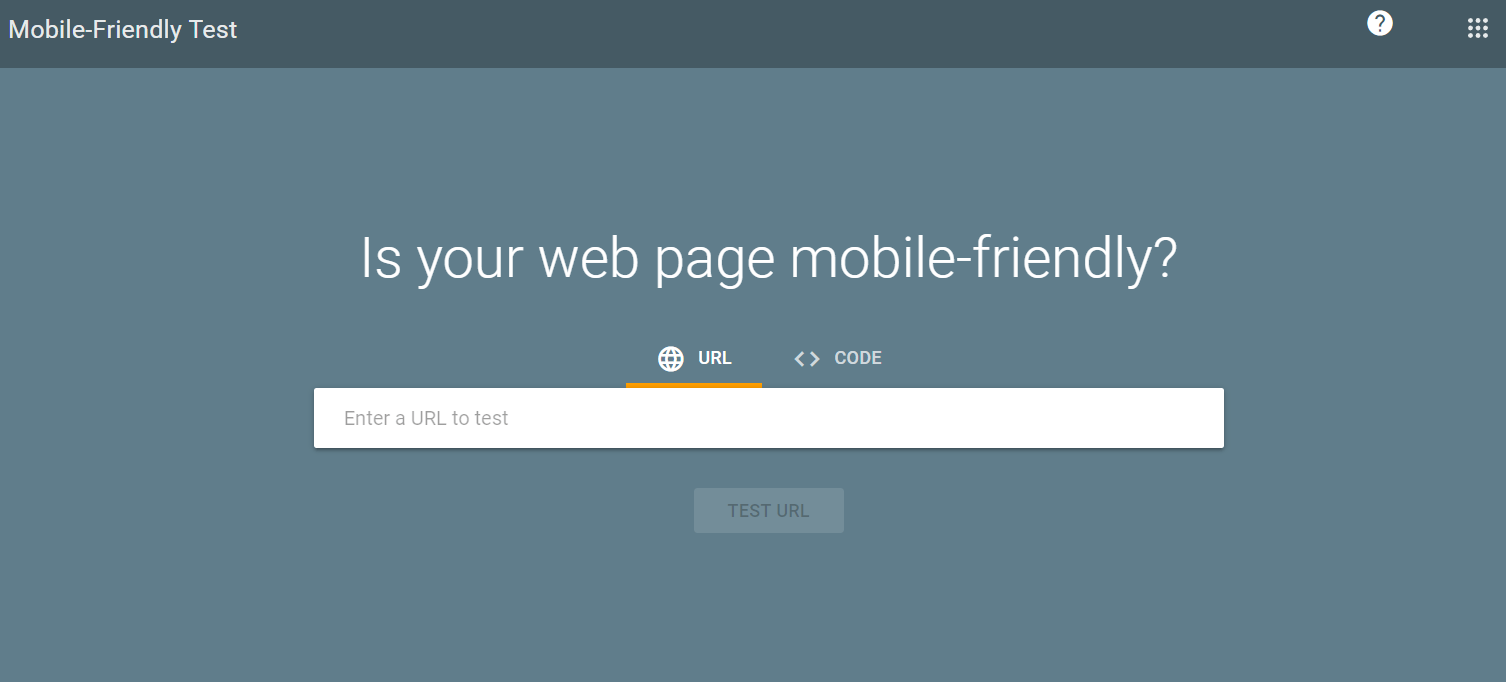
A mobile-friendly website means that no matter what device is used, it still remains usable and functional. The common issues that are encountered by mobile users are the following (1) page loading too slow, (2) too much clutter, (3) poor navigation experience, (4) cluttered pages, and (5) unoptimized call-to-action buttons. If we look at where the majority of the web traffic comes from, more than 60% is from mobile devices.
Tips to make your dry cleaning website mobile-friendly:
- Lessen or get rid of text-blocking pop-ups
- Pop-ups sometimes annoy page visitors especially if they are scrolling on your page and reading articles. If you are using several pop-ups on your dry cleaning website (e.g. sales promotion pop-ups, discount pop-ups, or light pop-ups) you might want to lessen them so they won’t disrupt their browsing experience. But, if you think that it’s one of the essentials in your website, make sure to make the exit buttons responsive and the pop-up automatically adjusts depending on the device used by the page visitor.
- Use a simple web design
- You want to make it easy for your potential customers to navigate your website while searching for the information that’s relevant to them.
- There should be an option where page visitors can switch from mobile to desktop view
- Some mobile users prefer viewing the desktop version of a website. With that, make sure that both versions are available on your dry cleaning website.
- Make it a habit to do a mobile-friendly test
- To check whether your dry cleaning website is mobile-friendly or not, use Google’s Mobile-Friendly Test. It’ll show you if your page is usable on mobile devices as well as a preview of your website when viewed on smartphones.
14. Update old blog posts

Another strategy that can help you rank high on SERP is by updating your previous content. If you have old posts that are ranking but not that high on search results, adding fresh content will make web crawlers re-evaluate your content and change your rank.
Here are some tips on how to update your old posts:
- Update your on-page SEO
- SEO best practices change over time. With that, you shouldn’t expect that SEO best practices from 5 years ago are still applicable today. That’s why you have to change some parts of your content so that it complies with the best practices that apply in today’s time.
- Improve readability by correcting typos
- If you are publishing long-form content on your dry-cleaning website, checking errors manually can take forever. However, the use of proofreading tools like Grammarly can help you easily spot errors and improve your content with its suggestions.
- Re-index your post
- Since you will make changes to your old posts, make sure that Google knows about it. You can do that by reindexing your post on Search Console.
15. Social Media Marketing
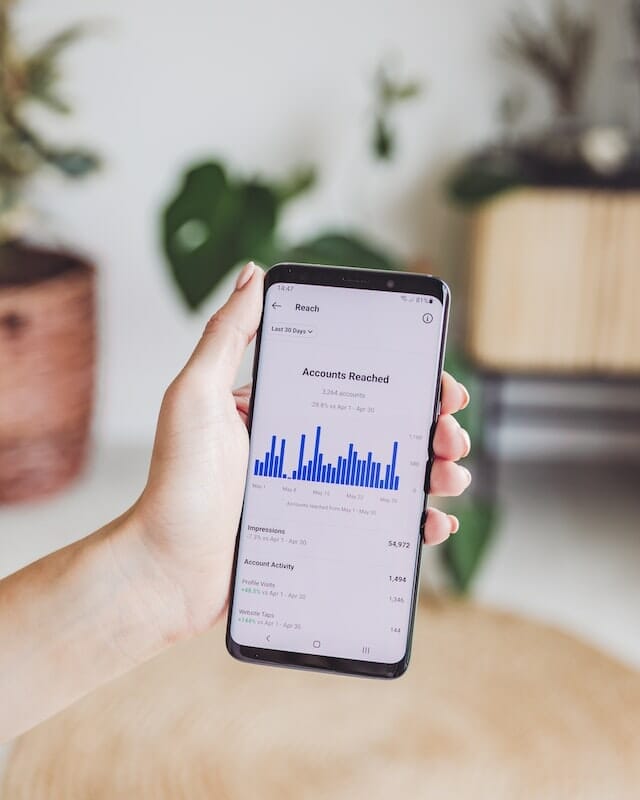
Did you know that 55% of consumers learn about a business through social media? Since an average user spends two and a half hours scrolling on their social media accounts, there’s a high chance that they’ll see suggested posts from businesses on their newsfeed.
Tips on how to use social media for SEO:
- Proper use of hashtags
- Hashtags, when done right, can help your posts show up on relevant topics that your target audience might be interested in. However, you have to make sure that you do lots of research and do not use random hashtags in your post. Here are three tips for using hashtags:
- Use various types of hashtags – industry hashtags, niche hashtags, brand hashtags, location hashtags, event hashtags, etc.
- Make sure that it’s relevant to the content of your post
- Limit the number of hashtags you use per post (3-5 is enough)
- Hashtags, when done right, can help your posts show up on relevant topics that your target audience might be interested in. However, you have to make sure that you do lots of research and do not use random hashtags in your post. Here are three tips for using hashtags:
- Write engaging captions
- Social media captions add value to what your post is all about. When done right, it can boost your engagement rate as well as your conversion rate!
- Leaving a comment on relevant posts
- If your previous customers mentioned your dry cleaning business on their social media posts or if you got mentioned on a vlogger’s social media page, leaving a comment on their posts and reposting it on your profile can also help you reach out to a brand-new audience!
- Partner with influencers
- You can also partner up with influencers who make dry-cleaning a part of their weekly routine. Just make sure that they have a good reputation and share the same advocacies as your dry cleaning business.
- Use location tags
- Location tagging allows your customers to check in at your dry cleaning business. It’s a great way to improve your brand’s visibility because when someone clicks on the location tag from a customer who shared their location (e.g. on a Facebook post or IG story), they’ll be redirected to the map which pins the exact location of your business.
- Optimize your social media page
- Lastly, filling out all of the information that a potential customer might be looking for, will make it easy for social media platforms to recommend your page to potential customers.
Want to know how to set up your ad campaigns on Google? Check out our blog about Google Ads for Dry Cleaners to learn more.
Need help optimizing your dry cleaning website?
Key takeaway
With the right strategies, you can make SEO work for your dry cleaning business. It’s an ongoing process that may take some time before you see results. Just follow the tips we’ve mentioned earlier and you will see the effects of your marketing strategies pay off in the long run.


